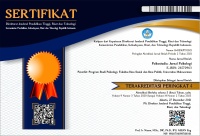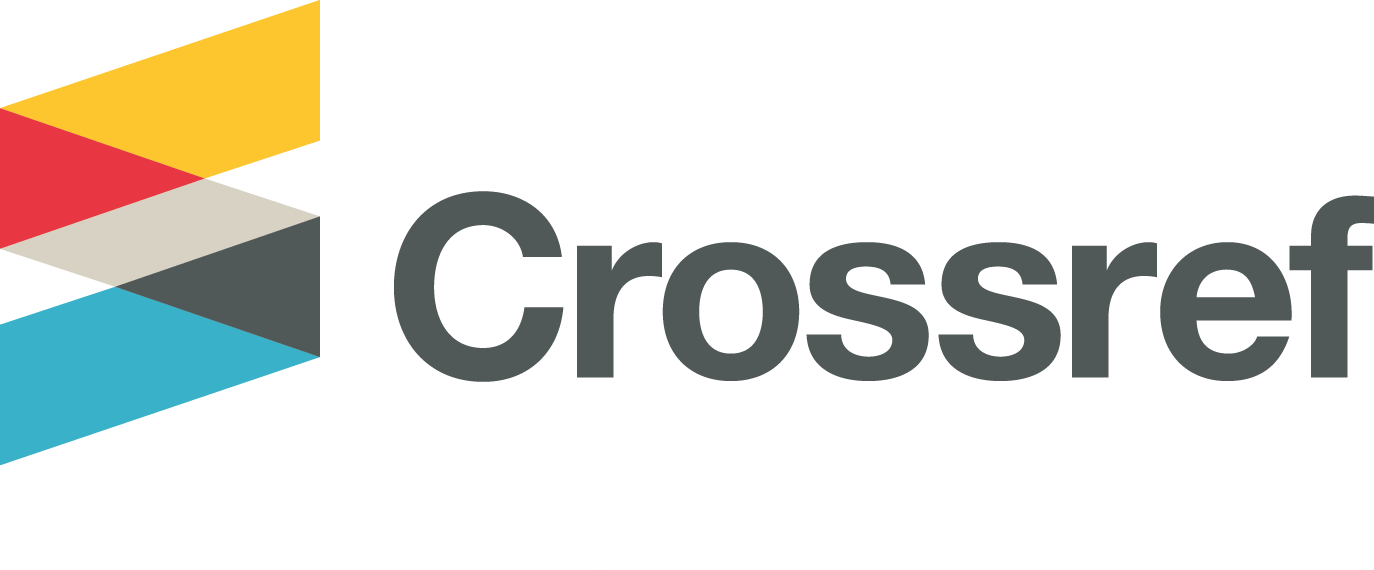Teacher Engagement: Confirmatory Factor Analysis (CFA) in Measuring Preschool Teacher Engagement Behaviorally, Emotionally and Cognitively
Abstract
Currently, student engagement is still a hot topic of discussion. Previous studies show that students who are involved in the learning process tend to achieve better results. Student engagement in learning cannot be separated from the teacher's involvement in teaching. This study aims to test the construct validity of the preschool teacher engagement measuring tool in terms of behavior, emotions and cognition developed by Pedler et al. (2020) Participants in this research were early childhood teachers with at least 1 year of teaching experience and numbered around 230 people. The measurement method uses self-report with 4 Likert scales. The total number of question items in this questionnaire is 23. The data were analyzed using confirmatory factor analysis techniques with STATA version 13 software. Through the confirmatory factor analysis procedure, a Teacher Involvement Scale was obtained that matched the model, namely the Teacher Involvement Scale is a tool for measuring teacher involvement which consists of 3 factors, namely behavioral, emotive and cognitive factors. Apart from that, a shorter number of items was obtained, namely 12 items which also had good internal reliability, overall and for each factor or dimension. Thus, the Teacher Involvement Scale can be used to measure teacher involvement in teaching students in the classroom.
Saat ini keterlibatan siswa masih merupakan topik yang hangat diperbincangkan. Penelitian-penelitian sebelumnya menunjukkan bahwa siswa yang terlibat dalam proses pembelajaran cenderung mencapai hasil yang lebih baik. Keterlibatan siswa dalam belajar tidak terlepas dari keterlibatan gurunya dalam mengajar. Penelitian ini bertujuan untuk menguji validitas konstruk alat ukur keterlibatan guru prasekolah dari segi perilaku, emosi, dan kognitif yang dikembangkan oleh Pedler et al. (2020) Partisipan dari penelitian ini adalah guru anak usia dini dengan pengalaman mengajar minimal 1 tahun dan berjumlah sekitar 230 orang. Metode pengukuran menggunakan self-report dengan 4 skala Likert. Total aitem pertanyaan dalam kuisioner ini berjumlah 23 buah. Data dianalisis menggunakan teknik analisis faktor konfirmatori dengan software STATA versi 13. Melalui prosedur analisis faktor konfirmatori didapatkan Skala Keterlibatan Guru yang cocok dengan modelnya, yaitu Skala Keterlibatan Guru merupakan alat ukur keterlibatan guru yang terdiri dari 3 faktor, yaitu faktor perilaku, emotif dan kognitif. Selain itu, diperoleh jumlah aitem yang lebih singkat, yaitu berjumlah 12 item yang juga memiliki reliabilitas internal yang baik, secara keseluruhan maupun tiap faktor atau dimensinya. Dengan demikian Skala Keterlibatan Guru dapat digunakan untuk mengukur Keterlibatan Guru dalam mengajar siswa di kelas.
Keywords
Full Text:
FULL TEXTReferences
Australian Government Department of Employment Education and Workplace Relations. (2009). BELONGING , BEING & BECOMING THE EARLY YEARS LEARNING FRAMEWORK FOR AUSTRALIA.
Bailey, D. B., & Wolery, M. (1992). Teaching Infants and Preschoolers with Disabilities. Merril.
Borja-Gil, J., Verdugo, M. C., & Oviedo-Garcia, M. A. (2022). Engagement and commitment in higher education Looking at the role of identification and perception of performance. European Journal of Education, 59(2).
Buettner, C. K., Jeon, L., Hur, E. H., & Garcia, R. E. (2016). Teachers’ Social–Emotional Capacity: Factors Associated With Teachers’ Responsiveness and Professional Commitment. Early Education and Development.
CESE. (2015). Student engagement and wellbeing in NSW: Initia results from a pilot of the Tell Them From Me student feedback survey. In Centre for Education Statistics and Evaluation (Issue 7).
CESE. (2017). Improving high school engagement, classroom practices and achievement. In Centre for Education Statistics and Evaluation (Issue 18).
Etikan, I., Musa, S. A., & Alkassim, R. S. (2017). Comparison of Convenience Sampling and Purposive Sampling Comparison of Convenience Sampling and Purposive Sampling. American Journal of Theoretical and Applied Statistics, February. https://doi.org/10.11648/j.ajtas.20160501.11
Ferreira, T., Cadima, J., & Matias, M. (2016). Preschool Children ’ s Prosocial Behavior : The Role of Mother – Child , Father – Child and Teacher – Child Relationships. Journal of Child and Family Studies, April. https://doi.org/10.1007/s10826-016-0369-x
Fredricks, J. A., Blumenfeld, P. C., & Paris, A. H. (2004a). School Engagement : Potential of the Concept , State of the Evidence Author ( s ): Jennifer A . Fredricks , Phyllis C . Blumenfeld and Alison H . Paris Published by : American Educational Research Association Stable URL : http://www.jstor.org/stable/35160. American Educational Research Association, 74(1), 59–109.
Fredricks, J. A., Blumenfeld, P. C., & Paris, A. H. (2004b). School engagement: Potential of the concept, state of the evidence. Review of Educational Research.
Goldspink, C., Winter, P., & Foster, M. (2008). Student engagement and quality pedagogy. Retrieved from. EERA.
Harris, L. R. (2015). A Phenomenographic Investigation of Teacher Conceptions of Student Engagement in Learning. Australian Education Researcher, April 2008. https://doi.org/10.1007/BF03216875
Havik, T., & Westergård, E. (2019). Do Teachers Matter ? Students ’ Perceptions of Classroom Interactions and Student Engagement. Scandinavian Journal of Educational Research, 0(0), 1–20. https://doi.org/10.1080/00313831.2019.1577754
Hox, J. (2021). Confirmatory Factor Analysis. In The Encyclopedia of Research Methods in Criminology and Criminal Justice. WIley.
Jang, H., & Deci, E. L. (2010). Engaging Students in Learning Activities : It Is Not Autonomy Support or Engaging Students in Learning Activities : It Is Not Autonomy Support or Structure but Autonomy Support and Structure. August. https://doi.org/10.1037/a0019682
Kelman, I. (2023). Inclusive engagement for environmental sustainability in small island states. Current Opinion in Environmental Sustainability, 61(June 1972), 101253. https://doi.org/10.1016/j.cosust.2022.101253
Larson, K. E., Ed, D., Pas, E. T., Ph, D., Bottiani, J. H., Ph, D., Kush, J. M., Bradshaw, C. P., & Ph, D. (2021). A Multidimensional and Multilevel Examination of Student Engagement and Secondary School Teachers ’ Use of Classroom Management Practices. Journal of Positive Behavior. https://doi.org/10.1177/1098300720929352
Lawson, M. A., & Lawson, H. A. (2013). New Conceptual Frameworks for Student Engagement Research, Policy, and Practice. Review of Educational Re, September 2013. https://doi.org/10.3102/0034654313480891
Marks, H. M. (2000). Student Engagement in Instructional Activity: Patterns in the Elementary, Middle, and High School Years. American Educational Research Journal. https://doi.org/10.3102/00028312037001153
McWilliam, R. ., Trivette, C. M., & Dunts, C. J. (1985). Behavior Engagement as a Measure of the Efficacy of Early Intervention. Analysis and Intervention in Developmental DIsabilities, 5, 59–71.
Pedler, M., Yeigh, T., & Hudson, S. (2020). The Teachers ’ Role in Student Engagement : A Review The Teachers ’ Role in Student Engagement : A Review. Australian Journal of Teacher Educatioon, 45(3).
Pianta, R. C., Paro, K. M. La, & Hamre, B. K. (2008). Classroom Assessment Scoring System (CLASS) Manual, K-3. Paul H Brookes Publishing Company.
Wang, M., & Eccles, J. S. (2012). So What Is Student Engagement Anyway? In Handbook of Research on Student Engagement (1st ed., pp. 133–145). Springer.
Wang, M., & Jessica, D. (2014). Staying Engaged: Knowledge and Research Needs in Student Engagement. Child Development Perspectives.
Widhiarso, W. (2016). Peranan butir unfavorabel dalam menghasilkan dimensi baru dalam pengukuran psikologi. Jurnal Psikologi Perceptual.
Williford, A. P., Whittaker, J. E. V., Vitiello, V. E., & Downer, J. T. (2013). Children ’ s Engagement Within the Preschool Classroom and Their Development of Self-Regulation. Early Education and Development, February. https://doi.org/10.1080/10409289.2011.628270
Xu, X., Shi, Z., Bos, N. A., & Wu, H. (2023). Student engagement and learning outcomes : an empirical study applying a four-dimensional framework. Medical Education Online, 28(1). https://doi.org/10.1080/10872981.2023.2268347
Zinsser, K. M., Bailey, C. S., Curby, T. W., & Denham, S. A. (2013). Exploring the predictable classroom: Preschool teacher stress, emotional supportiveness, and students’ social-emotional behavior in private and Head Start classrooms. NHSA Dialog A Research to Practice Journal for the Early Intervention Field, January.
DOI: http://dx.doi.org/10.30872/psikostudia.v13i3.15508
Refbacks
- There are currently no refbacks.
Copyright (c) 2024 Indriani Rusydi & Tulus Budi Sulistyo Radikun

This work is licensed under a Creative Commons Attribution-ShareAlike 4.0 International License.
Psikostudia: Jurnal Psikologi is indexed by :
PSIKOSTUDIA: Jurnal Psikologi Published by Faculty of Social and Political Siences, University of Mulawarman, Samarinda, East Kalimantan and This work is licensed under a Creative Commons Attribution-ShareAlike 4.0 International License.
_________________________________________
PSIKOSTUDIA: Jurnal Psikologi
Department of Psychology
Faculty of Social and Political Siences, University of Mulawarman
Jl. Muara Muntai Kampus Gn. Kelua Samarinda 75411
Phone: +62 813 35350368
E-Mail: psikostudia@fisip.unmul.ac.id




















